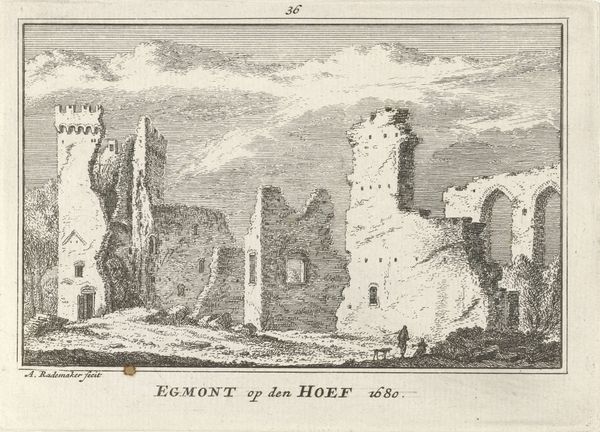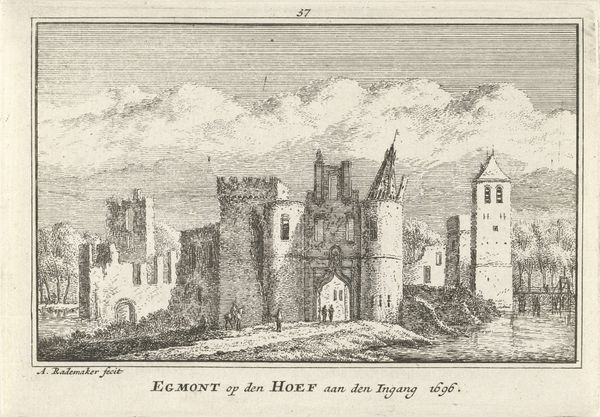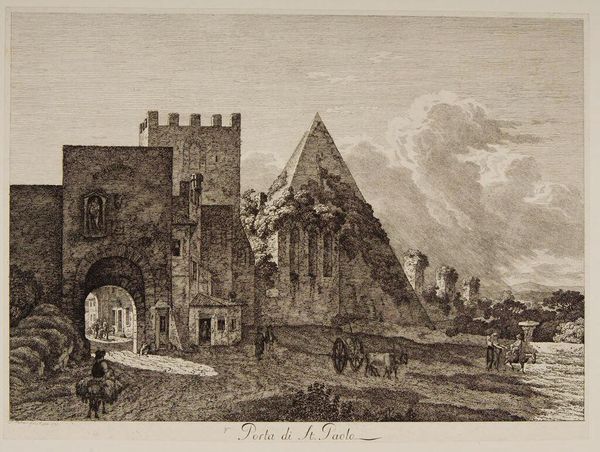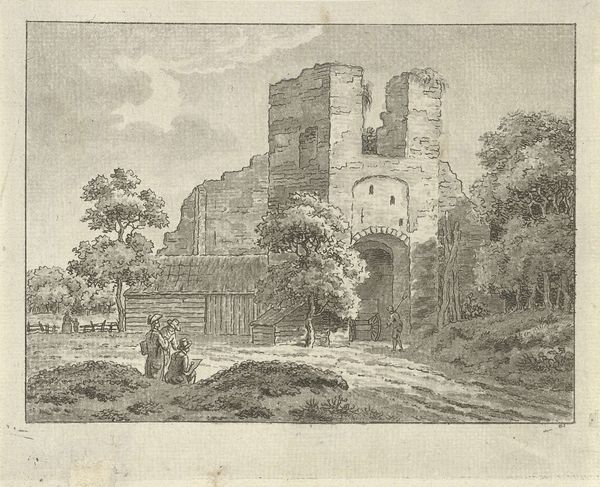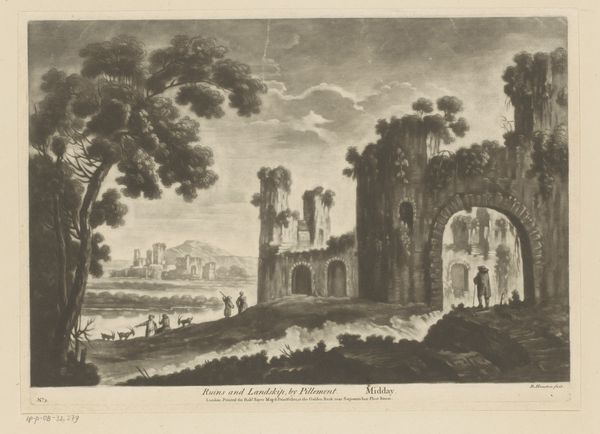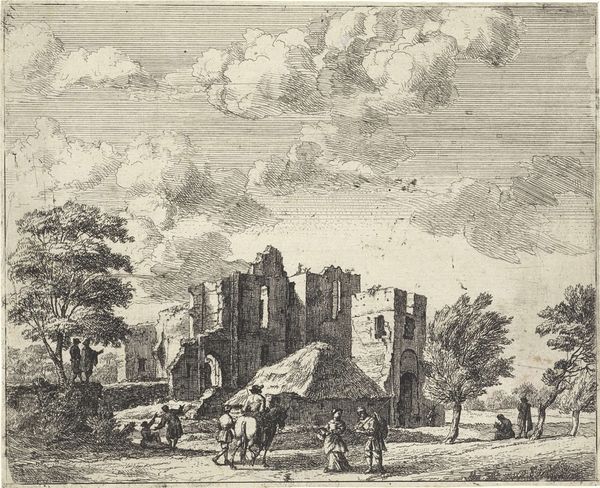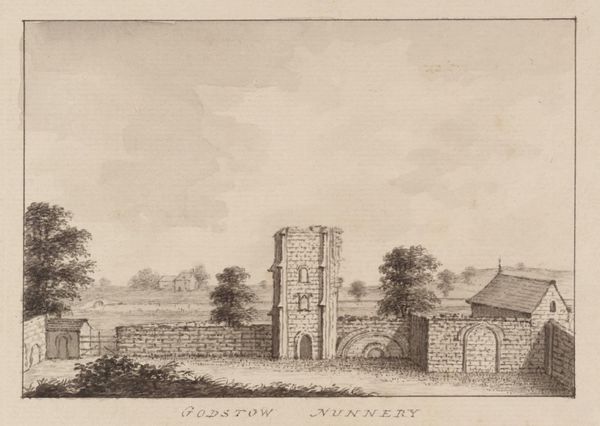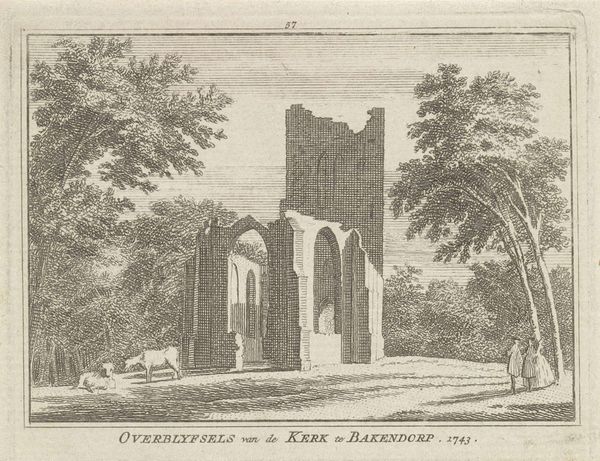
Gezicht op de ruïne van Huis ter Kleef te Haarlem, 1660 1727 - 1733
0:00
0:00
drawing, print, etching, engraving, architecture
#
drawing
#
baroque
# print
#
etching
#
landscape
#
house
#
engraving
#
architecture
Dimensions: height 80 mm, width 115 mm
Copyright: Rijks Museum: Open Domain
Abraham Rademaker made this etching entitled 'View of the Ruins of Huis ter Kleef in Haarlem' around 1660. It depicts the ruined castle of Huis ter Kleef, near Haarlem in the Netherlands. The image creates meaning through its depiction of decay and ruin. It serves as a reminder of the passage of time and the impermanence of human structures. The Dutch Republic in the 17th century experienced a time of great social, economic, and political change. The ruins of the castle could be interpreted as a symbol of the decline of the old order and the rise of a new society based on commerce and civic values. Was the artwork a lament for the past, or a celebration of the present? By understanding the social and institutional context in which art is made, we can gain a deeper appreciation of its meaning and significance. Resources such as historical archives, period documents, and scholarly articles help with this process. Art reflects and shapes society, and its meaning is contingent on its social and institutional context.
Comments
No comments
Be the first to comment and join the conversation on the ultimate creative platform.

